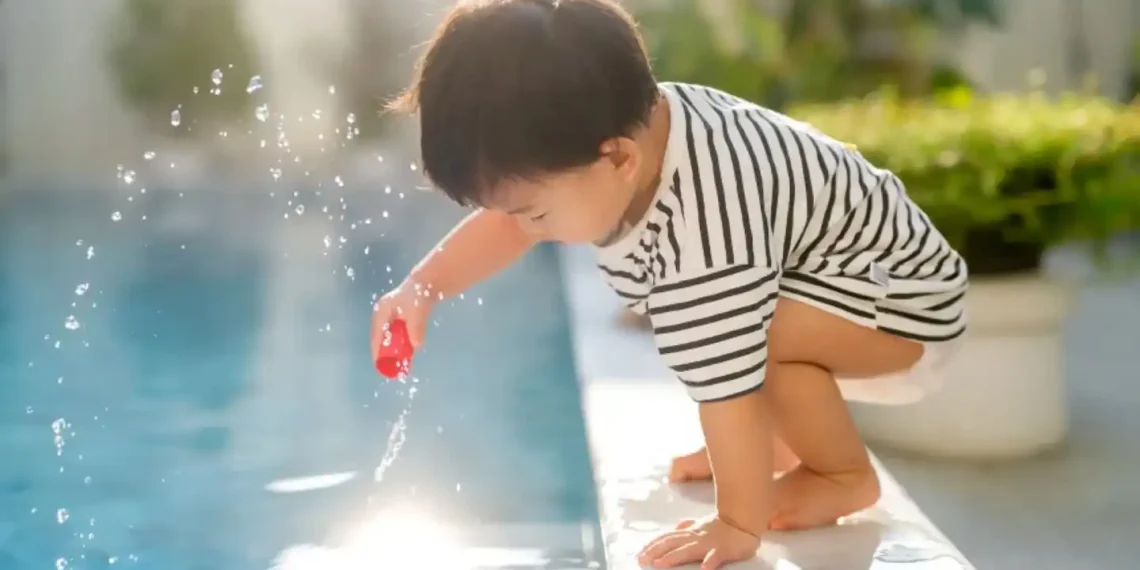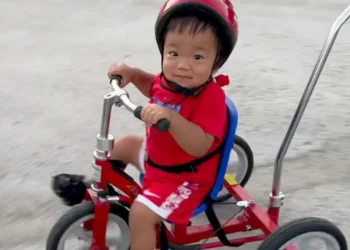Drowning Is the Top Cause of Death in Young Kids — Here’s How to Keep Them Safe This Summer
As summer heats up across the Northern Hemisphere, families are heading to pools, lakes, and beaches. But behind the fun lies a sobering fact: drowning is the leading cause of death for children ages 1 to 4 in the United States.
According to the CDC, around 4,000 fatal drownings occur in the U.S. every year — averaging 11 lives lost per day. Among kids aged 5 to 14, drowning is the second leading cause of accidental death, after car crashes.
To understand how to keep children safer around water, CNN spoke with Dr. Leana Wen, an emergency physician, public health expert, and mom of two who’s a strong advocate for swim education — especially since she learned to swim herself as an adult.
Who’s Most at Risk?
CDC data shows that children ages 1 to 4 are at highest risk, with 461 drowning deaths in 2022 alone — a 28% increase from 2019.
There are also stark racial disparities in drowning deaths:
- Black children accounted for 45% of drowning deaths among kids aged 5–14.
- Only 37% of Black Americans and 28% of Hispanic Americans reported having had swimming lessons, compared to 52% of White Americans.
Most tragically, 80% of drownings among children happen at home — in their own backyard pool or that of a neighbor, friend, or family member. Of those, 91% of residential drownings involved children under 7.
Why Are Residential Pools So Dangerous?
Unlike public pools and beaches, private pools often lack lifeguards. Parents or older siblings may be tasked with watching younger kids — but distractions, overconfidence, or lack of swimming ability can turn deadly in seconds.
“Drowning is silent,” Dr. Wen warns. “Small children can slip under in just 30 seconds, even in shallow water.”
Water Safety Tips for Parents and Guardians
Dr. Wen shared some essential tips to help prevent tragedy:
Always supervise children near water.
Even if they can swim or are using floaties, never take your eyes off them. The designated adult should be sober, undistracted, and able to jump in if needed.
Know how to swim.
If you’re responsible for watching children in or near water, you need to be able to swim yourself. If not, take lessons — not just for your safety, but for your child’s.
Learn CPR.
Every second counts. Learn CPR for infants, children, and adults through certified programs like the American Red Cross.
Secure home pools.
Install childproof fencing at least 4 feet tall with a self-latching gate. Most states require this by law.
Don’t assume small pools are safer.
Even shallow water can be deadly. Kiddie pools, bathtubs, and even buckets pose a risk for toddlers.
Safety in Natural Water Settings
If you’re boating or heading to a lake or ocean:
- Wear a US Coast Guard–approved life jacket. In 2022, 85% of boating drownings involved people who weren’t wearing one.
- Swim only in areas with lifeguards.
- Follow all posted safety rules — including weather alerts and water condition warnings.
The Life-Saving Power of Swim Lessons
Children aged 1 to 4 who take swim lessons have been shown to have an 88% lower risk of drowning, according to research published in JAMA Pediatrics.
These lessons aren’t about perfecting swim strokes — they’re about learning basic survival skills like:
- Treading water
- Floating on their back
- Knowing when to ask for help
Remind children to never swim alone, ask for permission before entering water, and never dive into unknown water.
It’s Never Too Late to Learn
Dr. Wen shared her personal journey as an adult learner:
“I didn’t grow up swimming. It took a terrifying moment when my toddler was pushed into a pool for me to realize I needed to learn — for their safety and mine.”
She took lessons alongside her children, starting with overcoming her fear of putting her head underwater. Now, she says, swimming is something they enjoy together — safely.
Final Takeaway: Water fun should never come at the cost of safety.
Supervision, swim lessons, and awareness can save lives. With a few precautions, families can make the most of summer — without tragedy.
This article was rewritten by JournosNews.com based on verified reporting from trusted sources. The content has been independently reviewed, fact-checked, and edited for accuracy, neutrality, tone, and global readability in accordance with Google News and AdSense standards.
All opinions, quotes, or statements from contributors, experts, or sourced organizations do not necessarily reflect the views of JournosNews.com. JournosNews.com maintains full editorial independence from any external funders, sponsors, or organizations.
Stay informed with JournosNews.com — your trusted source for verified global reporting and in-depth analysis. Follow us on Google News, BlueSky, and X for real-time updates.













